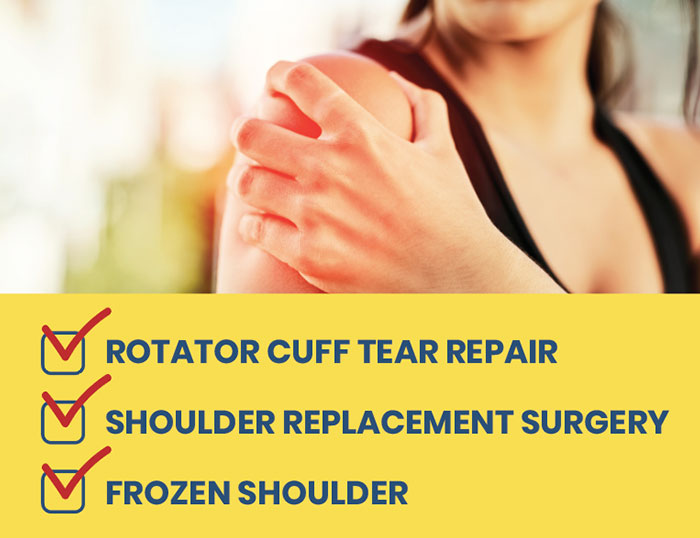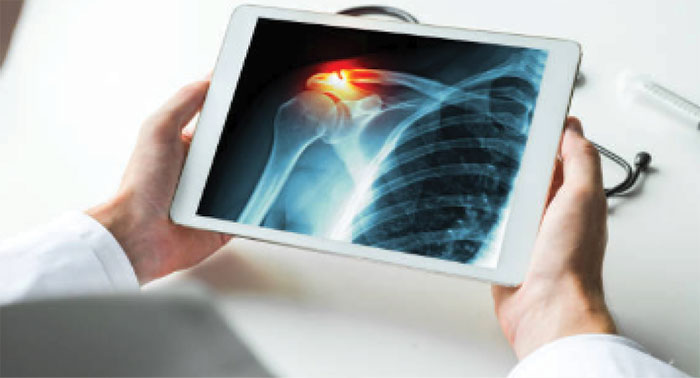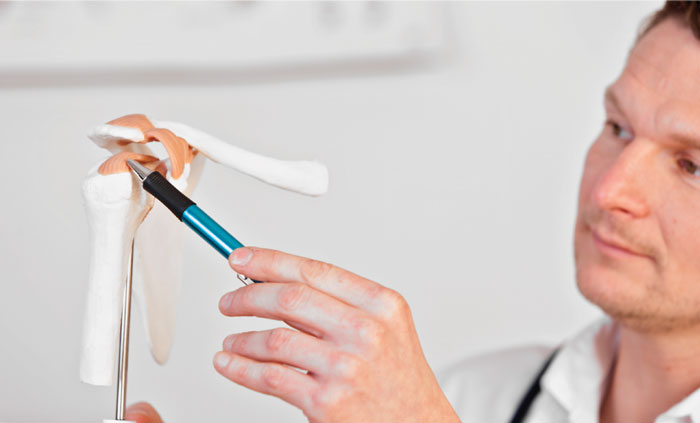
If conservative treatments aren’t effective, there are many types of shoulder surgery that may relieve pain and restore flexibility and range of motion.
The most flexible joint in the human body, the shoulder needs to function well to allow the attached arm to rotate and move into many different positions. Because this joint is so flexible, it’s also susceptible to injury or damage related to underlying health issues or degenerative conditions like arthritis of the shoulder (shoulder osteoarthritis).
Rotator Cuff Tear Repair
A sudden, jerky movement or a hard fall may result in a serious rotator cuff injury. If this tendon attachment to small muscles in the upper arm bone become torn, shoulder movement may become limited and painful. With arthroscopic tendon repair, the tendon is reattached to the bone. If open tendon repair is the better option, a larger incision is made to achieve the same goal. Should the affected tendon be severely damaged, a tendon transfer may be done. With severe tears, shoulder replacement may be necessary. If the bicep muscle in the front of the arm is also damaged, biceps tendon surgery may be performed with rotator cuff repair surgery.


Shoulder Replacement Surgery
Normally, shoulder replacement is performed because of extensive damage related to advanced arthritis of the shoulder joint. The procedure usually involves replacing the shoulder’s ball with one made of metal and the socket with one constructed of plastic and similar materials. If the socket is still intact, partial replacement (hemiarthroplasty) may be all that’s necessary. Another possibility is what’s referred to as reverse shoulder replacement, which is a reversal of the ball and socket.

Impingement Syndrome
When the tendons of the rotator cuff periodically become compressed and trapped during various movements, it’s referred to as impingement syndrome (rotator cuff tendonitis). It’s a condition that can damage fluid-filled sacs (bursa) within the joint space or damage shoulder tendons. A common arthroscopic procedure performed to correct this problem is subacromial decompression, which may result in the removal of part of the outward end of the shoulder blade (acromion) and the bursa.

Shoulder Dislocation
It’s not always possible to manipulate a shoulder joint that’s dislocated back into the correct position. If this is the case, surgery may involve fixing a weak shoulder joint, correcting related ligament damage, or repairing nerves or blood vessels affected by the dislocation. A procedure known as a Bankart repair is sometimes performed to attach the rim of cartilage that reinforces the shoulder’s ball-and-socket joint (labrum) to the joint capsule. Bones around the shoulder may need to be repositioned if repeated dislocations are occurring.

Frozen Shoulder
A stiff and painful shoulder joint affected by adhesive capsulitis (“frozen shoulder”) usually responds well to treatments involving range-of-motion exercises, medication, and steroid injections. If symptoms persist, however, surgery may be performed to loosen the contracted tissue in the affected shoulder.
Most types of shoulder surgery require some type of rehabilitation. One of the big advantages of arthroscopic procedures is the possibility of shortening the recovery and rehab period. While the American Orthopaedic Society for Sports Medicine estimates that more than a million shoulder arthroscopies are performed each year, there are times when open shoulder surgery can produce better results. The type of surgery recommended is usually based on the nature of the problem and patient-specific factors like age, lifestyle, and overall health.
